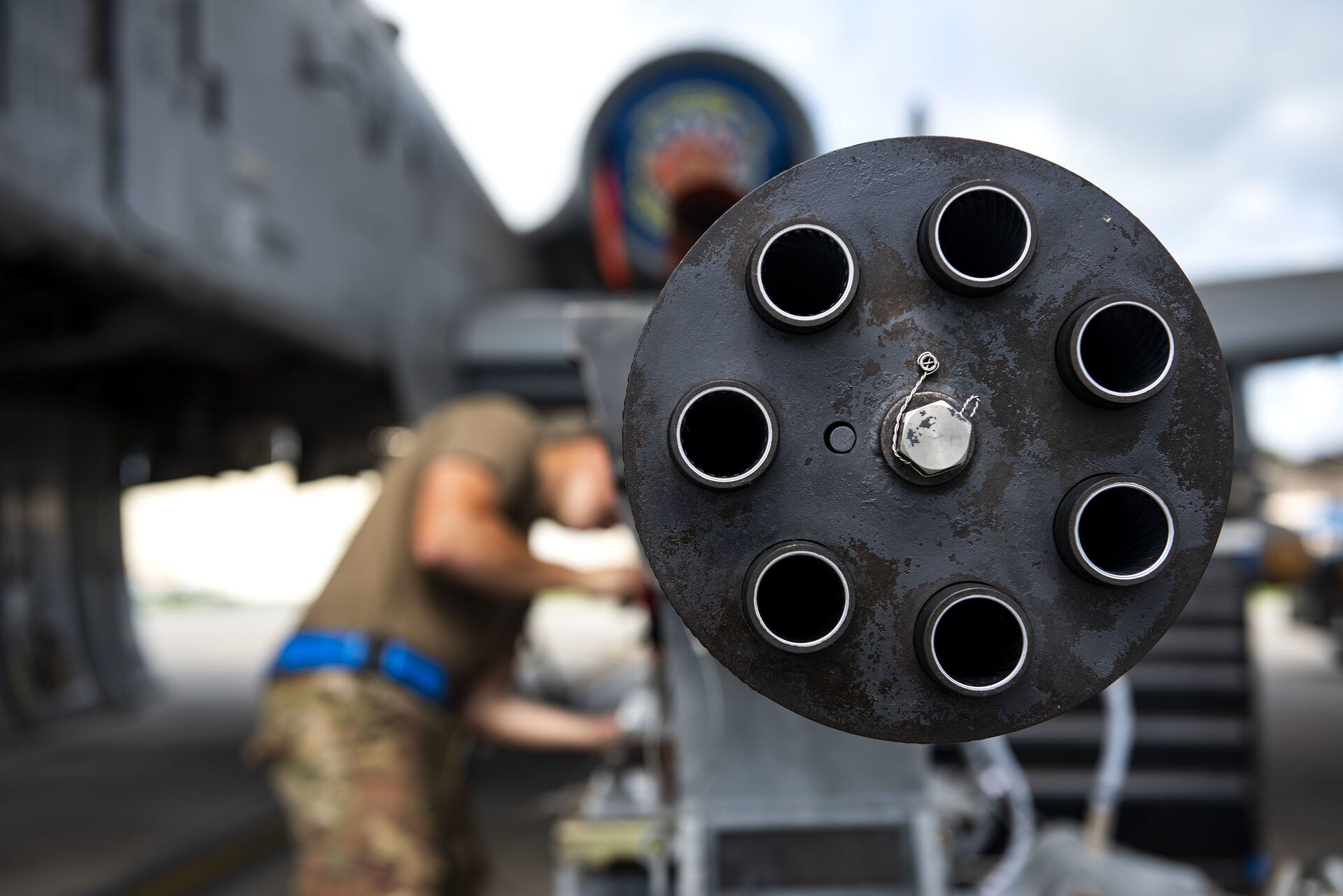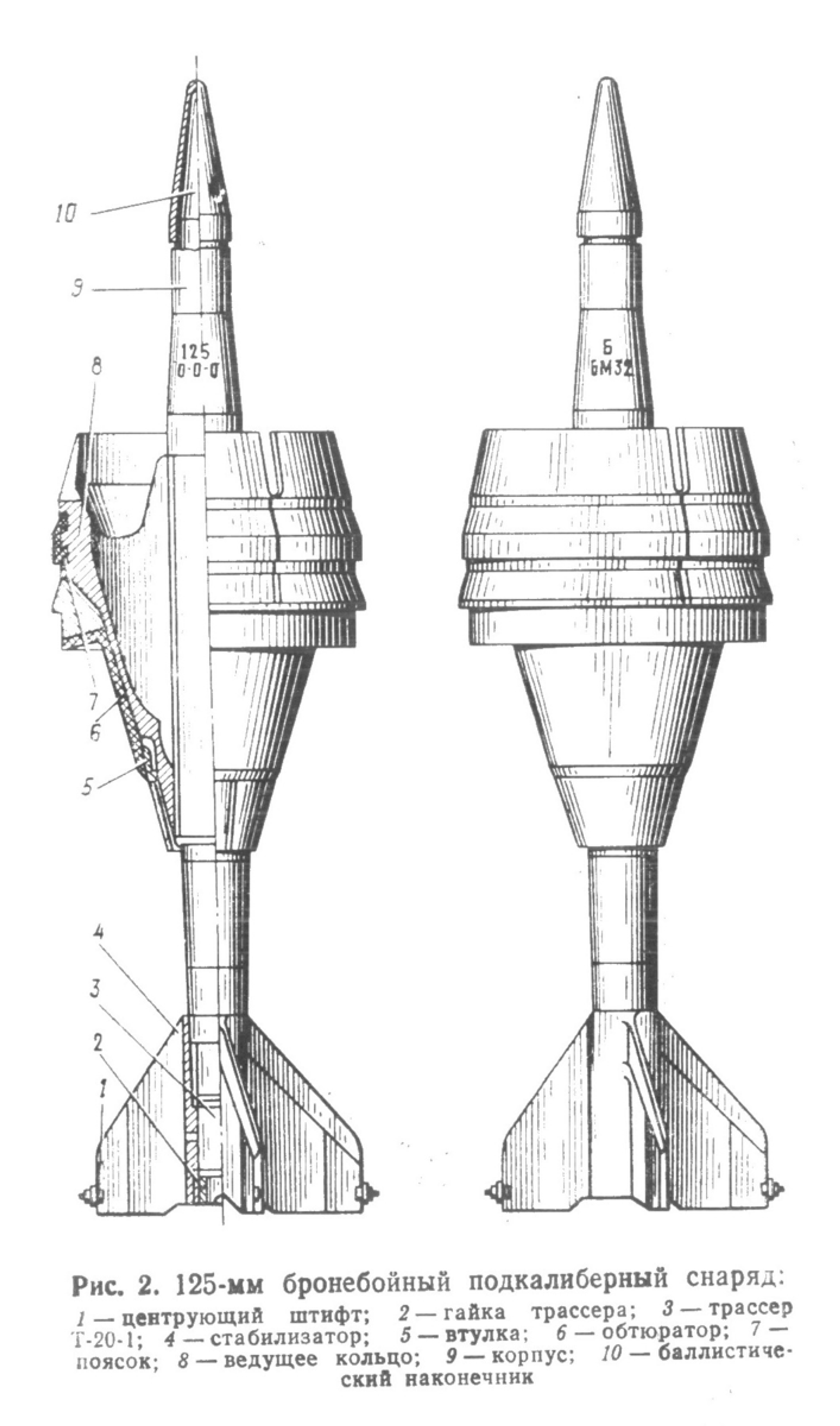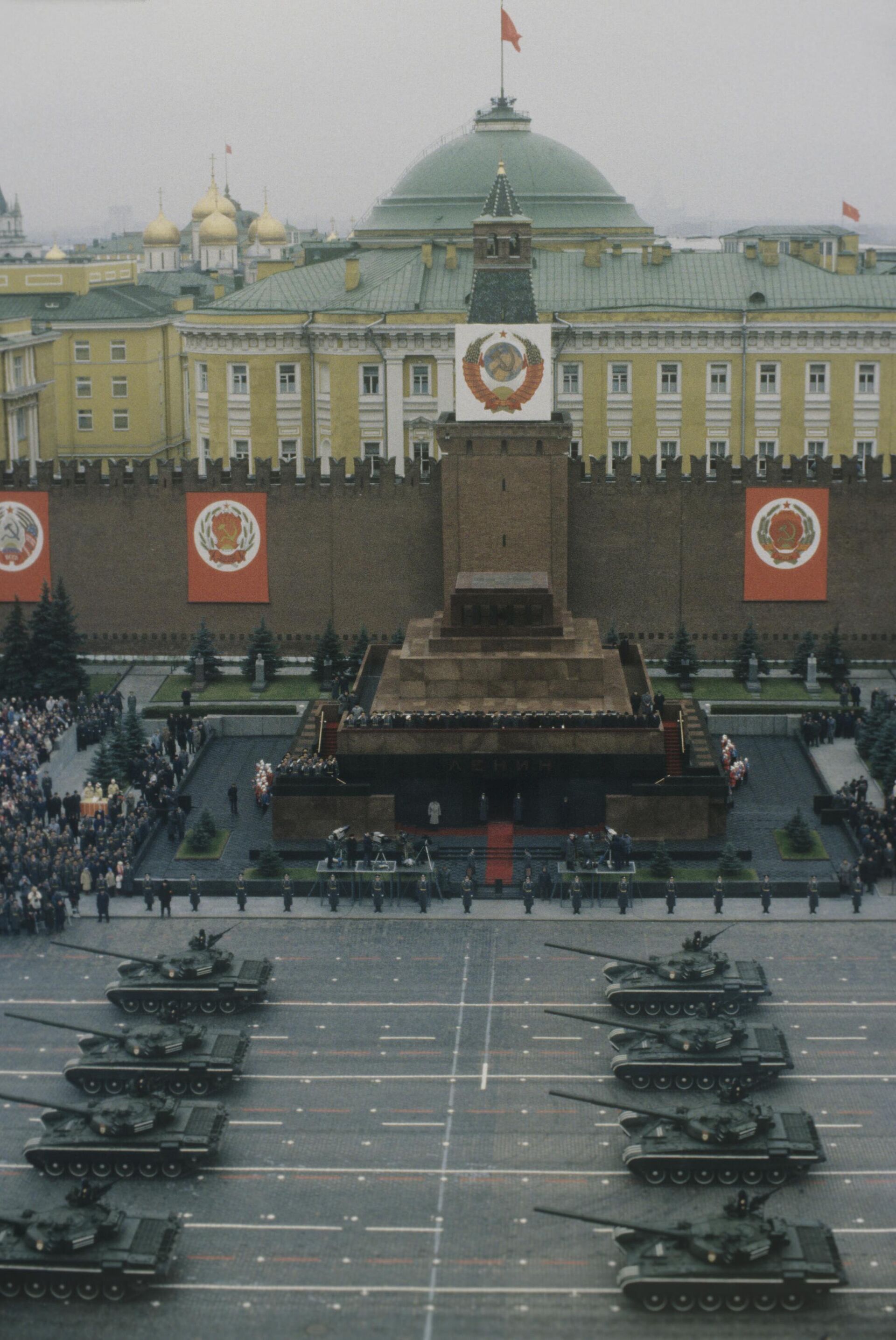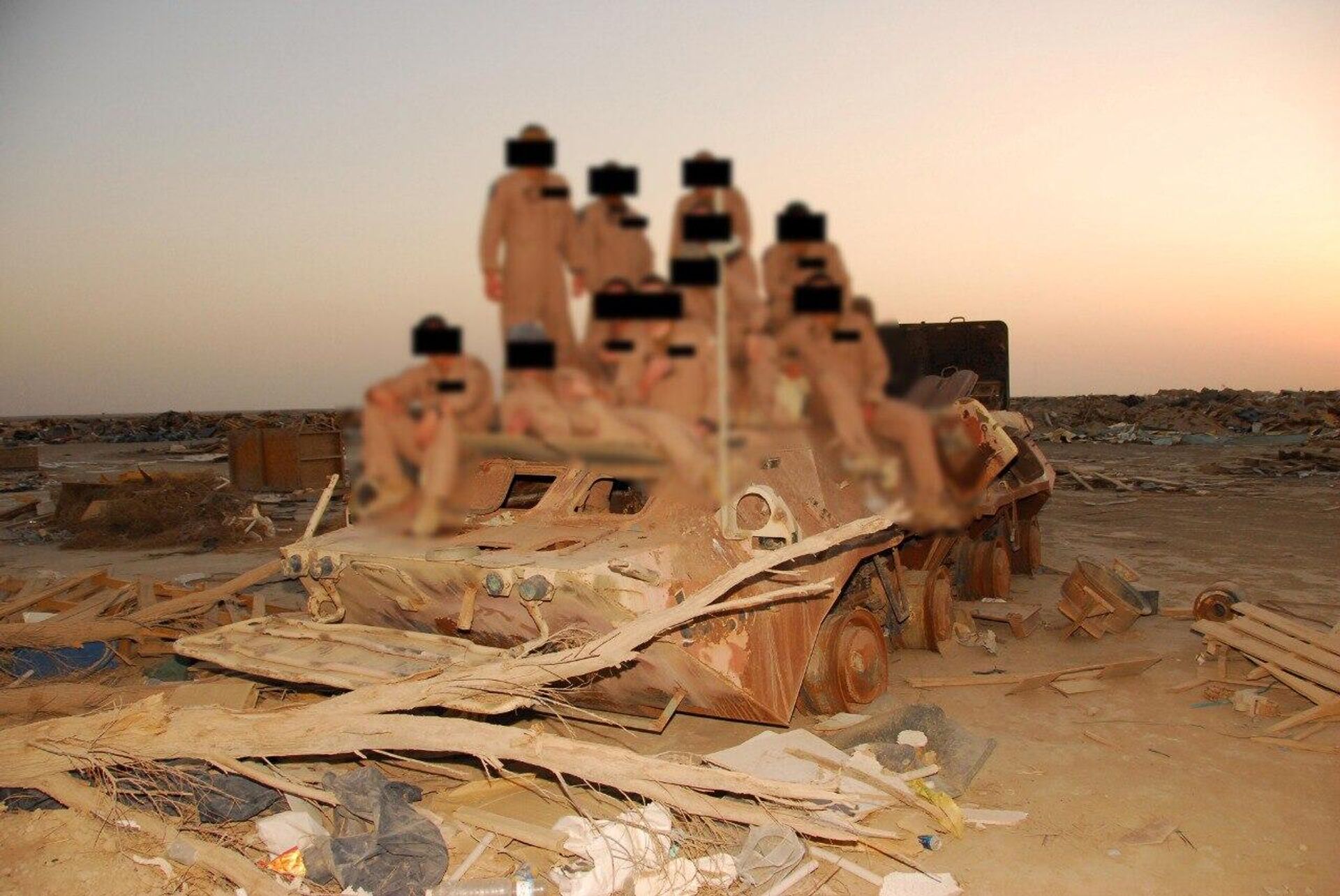https://sputnikglobe.com/20231220/we-prepared-to-use-them-in-vietnam-untold-story-of-us-toxic-romance-with-depleted-uranium-1114200068.html
'We Prepared to Use Them' in Vietnam: Untold Story of US' Toxic Romance With Depleted Uranium
'We Prepared to Use Them' in Vietnam: Untold Story of US' Toxic Romance With Depleted Uranium
Sputnik International
The US and Britain’s decision to send depleted uranium (DU) shell-equipped Abrams and Challenger 2 tanks to Ukraine has reignited public debate about the controversial weapons, which have left deep scars in every country they’ve touched. But DU’s history goes back further than most imagine. Sputnik has details you won’t find anywhere else.
2023-12-20T05:00+0000
2023-12-20T05:00+0000
2023-12-20T05:03+0000
analysis
iraq
ukraine
nato
pentagon
challenger 2
us
russia
depleted uranium
weapons
https://cdn1.img.sputnikglobe.com/img/07e7/0a/0e/1114202835_0:42:1008:609_1920x0_80_0_0_6848de28406c338a5e8b5837f0ef284f.png
The first batch of the M1 Abrams tanks arrived in Ukraine in late September, with President Volodymyr Zelensky thanking Kiev’s US “allies” for “fulfilling the agreements” and saying the tanks would be made ready “to strengthen our brigades.”Washington pledged 31 Abrams to Kiev back in January, several months before the Ukrainian Army kicked off its ill-fated summer counteroffensive, but held off on delivering the refurbished equipment for months, swapping out the tanks’ secretive Chobham composite armor in favor of cheaper, weaker protection. All 31 made it into the country by mid-October.The Abrams’ arrival follows the deployment of 14 British-made Challenger 2 tanks to Ukraine in March. Kiev held off on using the highly pampered British MBTs on the battlefield until September, when at least two of the heavy armored behemoths were destroyed in heavy fighting in Zaporozhye shortly after being deployed.The rationale behind the invention of depleted uranium ordnance is three-fold: their incredible armor-piercing capabilities, lower cost compared to tungsten ore-based penetrator projectiles, and the opportunity to ‘recycle’ spent nuclear fuel a country may have lying around, in this case by firing it at the enemy. As DU-equipped shells are fired, molten bits of uranium slough off the penetrator, enabling projectiles pierce deep into even the thickest of enemy armor.The main downside of DU weapons relates to the radioactive record of destruction they leave wherever they’re used, resulting in alarming rates of cancers and other health problems, both among residents of countries attacked using the weapons, and among military personnel using them.Who Thought Up Using Uranium as a Conventional Weapon?A casual English-language internet search on the history of uranium’s use as a conventional weapon lands on an unsourced article in Encyclopedia Britannica claiming that the United States defense military first “began using depleted uranium in 1977,” with the development of DU ammunition attributed to advances in tank armor construction by the Soviet Union. The Environmental Protection Agency similarly attributes the start of the creation of America’s DU munitions stockpile to the 1970s.But a deeper dive reveals that the idea of using uranium in bullets and shells actually goes back to the Second World War to even before the dawn of the nuclear age. Reich Minister of Armaments and War Production Albert Speer would recall in in his memoirs how he ordered the use of uranium in the production of armor-piercing ammunition, with the halt of imports of the iron manganese tungsten oxide wolframite from Portugal in 1943 resulting in critical shortages in Nazi Germany’s war production.The Third Reich hoped to make up for it using its plentiful uranium reserves after seizing about 1,200 tons of the stuff from Belgium in 1940. Uranium core rounds were subsequently developed and incorporated into Rheinmetall-Borsig MK 103 30 mm caliber autocannons, used in both ground vehicles and fighters, and were reportedly deployed to the Eastern Front sometime after 1943.‘We Saw It, We Had It’Starting in the 1950s, US government agencies began researching possible uses for America’s growing stockpiles of depleted uranium. The Pentagon quickly caught on, with the US and some of its overseas allies beginning programs to develop and test fire DU-equipped munitions including armor penetrators and spotter rounds. Thousands of DU rounds rained down on military bases across the US in tests and training through the 1960s, including in Washington State and Hawaii.“Now, when I was in Vietnam, I don’t know for sure that they used it. The area I was in or what I was doing was not involved with DU as far as I know. I do know that aircraft there in the Air Force had Gatling guns, 20 millimeter Gatling guns, which were capable of firing DU rounds,” Anderson said.The massively successful M61 Vulcan 20-mm rotary cannons that began to be fielded by the Air Force, Army and Navy starting in the late 1950s did come equipped with armor-piercing DU round capability. The hydraulically operated, electrically fired heavy guns were fitted aboard a wide array of Air Force jets used in Vietnam, including the F-105D Thunderchief, the F-4 Phantom II, and the F-111 Aardvark. The guns have also been used by the Navy as close-in weapons, and fitted to ground vehicles such as the M163 tracked, mobile air defense system.“I know that the American aircraft were capable of using them, because at the time in the States, we were preparing to use them, we were training. The pilots were training with them. And as a munitions expert, my job was to take care of accidents with those things. We were prepared to handle accidents and move them or move the materials around if we had to,” Anderson recalled.Even back then, Anderson said, specialists were well aware of how dangerous DU could be. “We prepared and studied them and knew about them…We knew…that ‘this is bad stuff’. We didn’t want to be around it or handle it unless we actually definitely had to for some reason.”From the 1970s onward, M61 Vulcan guns were attached to a number of newer planes, including the F-14 Tomcat, the F-15 Eagle, the F-16 Fighting Falcon, and the F/A-18 Hornet, as well as aircraft used by a handful of US allies, including Italy, West Germany, Brazil and Japan.Later, a heavier, 30-mm autocannon known as the GAU-8/A Avenger was developed, and attached to A-10 Thunderbolt II heavy ground attack aircraft. That gun is also capable of firing DU rounds.DU Developments Behind the Iron CurtainIn the Soviet bloc, military scientists’ foray into depleted uranium munitions started much later, with tank shell developers introducing the 125-mm 3BM32 ‘Vant’ armor-piercing DU APFSDS in 1985, several years after the Abrams’ deployment had already begun. The Vant consisted of a DU-nickel-zinc alloy, and offered an estimated 15 percent improvement in armor-piercing performance over the BM29 Nadfil-2, a non-DU anti-armor shell for the T-72.A second DU tank round known as the BM48 Svinets ("Lead") was also created, featuring superior penetration. A tungsten-based variant of the Vant known as the BM-42 ‘Mango’ was introduced in 1986, and featured armor-piercing capabilities superior even to the 3BM32, resulting in its widespread deployment aboard Russian and Ukrainian T-90 and T-80U MBTs alongside the new DU penetrator-equipped shells.DU is Dangerous: PutinWarsaw Pact armies never ended up using DU munitions on the battlefield, with post-Soviet Russia similarly choosing to refrain from their use, perhaps mindful of experiences the US and its allies had deploying the toxic weapons in Iraq during the 1991 Gulf War and the 2003 US-UK invasion, in Yugoslavia in 1995 and 1999, and to a lesser extent in Afghanistan, Syria, and Gaza.“Without exaggeration, we have hundreds of thousands, literally hundreds of thousands of such rounds. We haven’t use them yet,” Putin added.‘Nobody Should Be Using This Stuff’Iraq and the former Yugoslavia, where DU weapons were most heavily used in the past, have been made to pay a heavy cost.According to Iraqi government data, cancer rates in the country jumped from just 40 cases per 100,000 people in 1991 to 800 per 100,000 in 1995, and 1,600 per 100,000 by 2005. Particularly high incidence rates have been reported in Baghdad, Basra and Fallujah, all cities heavily bombarded by US and British DU weaponry in 1991 and 2003.Residents of Serbia, Montenegro and Bosnia have faced similarly grim outcomes, suffering outsized rates of oncology among European countries in both adults and children, along with abnormally high levels of infertility, autoimmune diseases, mental disorders and other illnesses attributed to DU exposure.Tens of thousands of American and other NATO servicemen were exposed to DU munitions during these wars, with courts across Europe ruling that DU can cause cancers, and ordering governments to pay out millions in compensation. In the US too, veterans can file claims for disability compensation if they think they’ve been exposed to DU during their service.But the same courtesy has not been offered to countries impacted by NATO's wars, with the alliance claiming immunity from prosecution to depleted uranium poisoning-related lawsuits filed by Serbs, and the US ignoring a similar campaign by lawyers in Iraq. Earlier this year, as London and Washington prepared to send DU munitions to Ukraine, a chorus of officials and legacy media voices have repeated ad nauseam that 'DU is safe' and that the risks of its use are minimal.“Because from what I have read in literature and experiences in other areas of the world, it’s very harmful to humans and lingers in the environment and can be absorbed into the body. I’m not a medical expert, but I know enough from what I’ve read about it and use in Iraq and other places and what we were told even in the sixties that we didn’t want to play with this stuff and be around it even if it was used,” the veteran stressed.‘We Were Not Told Anything About DU’US Navy veteran Mike James, a Mass Communication Specialist Petty Officer who fought in Iraq in 2008, says information about the dangers of DU munitions wasn’t made available to him and his comrades by that time.“We were stationed, at the time we called it ‘Ali Airbase.’ It had several names,” James recalled. “The Army called it Camp Adder, I believe…But it was near the town of Al-Nasiriyah in southern Iraq, which is one of the largest air bases in the country. And Al-Nasiriyah is one of the biggest cities, the biggest city in southern Iraq.”“It was one of the places where a lot of depleted uranium munitions were fired, beginning in the 90s during the [Iraqi] retreat from Kuwait…A-10 Warthogs fired depleted uranium rounds at retreating Iraqi units from Kuwait…And then again later in the 2000s during Operation Iraqi Freedom,” James, who educated himself on the use of DU in Iraq independently after leaving the military, said.“From my research, about 300 tons of depleted uranium were fired or are lying around in the desert of Iraq. That’s just from what has been independently verified,” the officer noted, adding that he believes the true figures are much higher.“The health consequences are horrendous. They are worse than any American is willing to think about or come to terms with. At least that’s the way it seems. The general public simply cannot come to terms with the horrific effects,” James added, comparing the consequences of DU munitions’ use to Hiroshima.The former soldier, who now suffers from post-traumatic stress disorder and traumatic brain injuries following deployments in Iraq and Afghanistan, told Sputnik he’s not sure if he got a serious dose of radiation from exposure to DU-contaminated vehicles, land, water and air during his tour in Iraq, but recalled that the rate of pollution was incredible, with a burn pit containing hundreds of Iraqi military vehicles knocked out by DU rounds burning round the clock.DU Deliveries Prove US Establishment ‘Does not Care About Ukrainian People’James is convinced that Washington’s decision to send DU to Ukraine constitutes a war crime.Anderson agrees that there definitely seems to be a hidden “psychological” motivation behind NATO countries' decision to deploy DU to Ukraine.“They’re trying to prepare the public to accept the use of nuclear weapons in war, which I think is a stepping stone to using tactical nuclear weapons on the battlefield. They keep wanting to present these kinds of weapons, like DU and the B61 bombs, which are tactical, a smaller, dialed down yield of nuclear weapons, as acceptable. And I think it’s a continuing psychological escalation to prepare the American people to accept [that] it’s possible that we could get into a conflict using nuclear weapons, and that ‘it’s survivable’, ‘it’s winnable’.”Ultimately, such thinking amounts to a “suicidal” “dead end” for humanity, Anderson concluded.
https://sputnikglobe.com/20230906/bad-decision-all-around-ex-pentagon-officials-blast-us-move-to-send-ukraine-depleted-uranium-1113160766.html
https://sputnikglobe.com/20230907/how-us-media-learned-to-love-depleted-uranium-shells-amid-ukraine-counteroffensive-1113179148.html
iraq
ukraine
russia
Sputnik International
feedback@sputniknews.com
+74956456601
MIA „Rosiya Segodnya“
2023
News
en_EN
Sputnik International
feedback@sputniknews.com
+74956456601
MIA „Rosiya Segodnya“
Robert Anderson explains how American troops were trained to use depleted uranium shells in the 1960s.
Sputnik International
Robert Anderson explains how American troops were trained to use depleted uranium shells in the 1960s.
2023-12-20T05:00+0000
true
PT0M56S
Mike James: We know there was depleted uranium
Sputnik International
Mike James: We know there was depleted uranium
2023-12-20T05:00+0000
true
PT0M56S
Mike James: It is about imperial domination over the planet and their effort to destroy Russia.
Sputnik International
Mike James: It is about imperial domination over the planet and their effort to destroy Russia.
2023-12-20T05:00+0000
true
PT0M43S
Sputnik International
feedback@sputniknews.com
+74956456601
MIA „Rosiya Segodnya“
depleted uranium, ukraine, russia, united states, united kingdom, tank, abrams, challenger, m1, anti-tank, munition, weapon, history, vietnam, iraq, afghanistan, syria, gaza, yugoslavia, serbia
depleted uranium, ukraine, russia, united states, united kingdom, tank, abrams, challenger, m1, anti-tank, munition, weapon, history, vietnam, iraq, afghanistan, syria, gaza, yugoslavia, serbia
The first batch of the M1 Abrams tanks arrived in Ukraine in late September, with President Volodymyr Zelensky thanking Kiev’s US “allies” for “fulfilling the agreements” and saying the tanks would be made ready “to strengthen our brigades.”
Washington pledged 31 Abrams to Kiev back in January, several months before the Ukrainian Army kicked off its
ill-fated summer counteroffensive, but held off on delivering the refurbished equipment for months,
swapping out the tanks’ secretive Chobham composite armor in favor of cheaper, weaker protection. All 31 made it into the country by mid-October.
The Abrams’ arrival follows the deployment of 14 British-made Challenger 2 tanks to Ukraine in March. Kiev held off on using the
highly pampered British MBTs on the battlefield until September, when at least two of the heavy armored behemoths were
destroyed in heavy fighting in Zaporozhye shortly after being deployed.
Besides their comparable weight, 120 mm main guns, 4 man crews, and ‘bigger-is better’ philosophy common to NATO tank designs from the 80s and 90s, the Abrams and the Challenger 2 are united by their ability to fire depleted uranium munitions: the M829 armor-piercing, fin-stabilized discarding sabot (APFSDS) in the case of the Abrams, and the L27A1 CHARM 3 (Challenger ARMament 3) DU penetrator-equipped APFSDS in the case of the Challenger 2.
The rationale behind the invention of depleted uranium ordnance is
three-fold: their incredible armor-piercing capabilities, lower cost compared to tungsten ore-based penetrator projectiles, and the opportunity to ‘recycle’ spent nuclear fuel a country may have lying around, in this case by firing it at the enemy. As DU-equipped shells are fired, molten bits of uranium slough off the penetrator, enabling projectiles pierce deep into even the thickest of enemy armor.
The main downside of DU weapons relates to the
radioactive record of destruction they leave wherever they’re used, resulting in alarming rates of
cancers and other health problems, both among residents of countries attacked using the weapons,
and among military personnel using them.
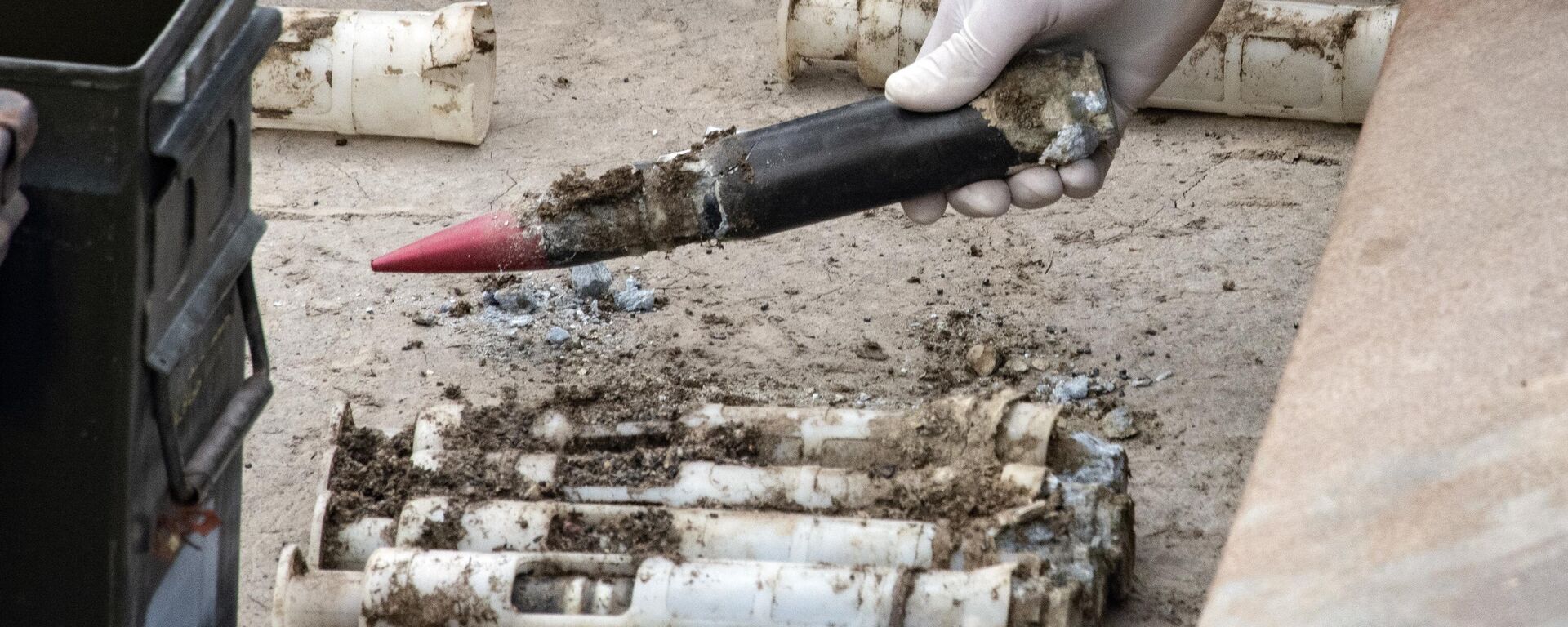
6 September 2023, 20:50 GMT
Who Thought Up Using Uranium as a Conventional Weapon?
A casual English-language internet search on the history of uranium’s use as a conventional weapon lands on an unsourced
article in Encyclopedia Britannica claiming that the United States defense military first “began using depleted uranium in 1977,” with the development of DU ammunition attributed to
advances in tank armor construction by the Soviet Union. The Environmental Protection Agency
similarly attributes the start of the creation of America’s DU munitions stockpile to the 1970s.
But a deeper dive reveals that the idea of using uranium in bullets and shells
actually goes back to the Second World War to even before the dawn of the nuclear age. Reich Minister of Armaments and War Production Albert Speer would recall in in his
memoirs how he ordered the use of uranium in the production of armor-piercing ammunition, with the halt of imports of the iron manganese tungsten oxide wolframite from Portugal in 1943 resulting in critical shortages in Nazi Germany’s war production.
The Third Reich hoped to make up for it using its plentiful uranium reserves after seizing about 1,200 tons of the stuff from Belgium in 1940. Uranium core rounds were subsequently developed and incorporated into
Rheinmetall-Borsig MK 103 30 mm caliber autocannons, used in both ground vehicles and fighters, and were
reportedly deployed to the Eastern Front sometime after 1943.
But it would only be after the dropping of the US atomic bombs on the Japanese cities of Hiroshima and Nagasaki in 1945, and the launch of the first nuclear power plant in the world in Obninsk in the USSR in 1954, that the stage would be set for the use of depleted uranium, the byproduct left over after uranium has been enriched for use in nuclear reactors and weapons, in conventional ammunition.
Starting in the
1950s, US government agencies
began researching possible uses for America’s growing stockpiles of depleted uranium. The Pentagon quickly caught on, with the US and some of its overseas allies
beginning programs to develop and test fire DU-equipped munitions including armor penetrators and spotter rounds. Thousands of DU rounds
rained down on military bases across the US in tests and training through the
1960s, including in Washington State and Hawaii.
“I was in the American Air Force in the mid-1960s, and I was in a field that dealt with munitions and explosives. It was called EOD [Explosive Ordnance Disposal, ed.], and we had to be trained and prepared to handle any kind of accidents with any of these kinds of materials. And here in the States, we were trained in what DU was. We saw it, we had it,” Robert Anderson, Air Force vet and member of the Veterans for Peace nonprofit, told Sputnik.
“Now, when I was in Vietnam, I don’t know for sure that they used it. The area I was in or what I was doing was not involved with DU as far as I know. I do know that aircraft there in the Air Force had Gatling guns, 20 millimeter Gatling guns, which were capable of firing DU rounds,” Anderson said.
The massively successful M61 Vulcan 20-mm rotary cannons that began to be fielded by the Air Force, Army and Navy starting in the late 1950s did come equipped with armor-piercing DU round capability. The hydraulically operated, electrically fired heavy guns were fitted aboard a wide array of Air Force jets used in Vietnam, including the F-105D Thunderchief, the F-4 Phantom II, and the F-111 Aardvark. The guns have also been used by the Navy as close-in weapons, and fitted to ground vehicles such as the M163 tracked, mobile air defense system.
“I know that the American aircraft were capable of using them, because at the time in the States, we were preparing to use them, we were training. The pilots were training with them. And as a munitions expert, my job was to take care of accidents with those things. We were prepared to handle accidents and move them or move the materials around if we had to,” Anderson recalled.
Even back then, Anderson said, specialists were well aware of how dangerous DU could be. “We prepared and studied them and knew about them…We knew…that ‘this is bad stuff’. We didn’t want to be around it or handle it unless we actually definitely had to for some reason.”
“I was trained on them in 1966 and 1967 in the EOD school that we were in. So I know that in the mid-sixties they already had it. It was in production and pilots were practicing with it on ranges here in the United States,” the veteran reiterated.
From the 1970s onward, M61 Vulcan guns were attached to a number of newer planes, including the F-14 Tomcat, the F-15 Eagle, the F-16 Fighting Falcon, and the F/A-18 Hornet, as well as aircraft used by a handful of US allies, including Italy, West Germany, Brazil and Japan.
Later, a heavier, 30-mm autocannon known as the GAU-8/A Avenger was developed, and attached to A-10 Thunderbolt II heavy ground attack aircraft. That gun is also capable of firing DU rounds.
DU Developments Behind the Iron Curtain
In the Soviet bloc, military scientists’ foray into depleted uranium munitions started much later, with tank shell developers introducing the 125-mm 3BM32 ‘Vant’ armor-piercing DU APFSDS in 1985, several years after the Abrams’ deployment had already begun. The Vant consisted of a DU-nickel-zinc alloy, and offered an estimated
15 percent improvement in armor-piercing performance over the BM29 Nadfil-2, a non-DU anti-armor shell for the T-72.
A second DU tank round known as the
BM48 Svinets ("Lead") was also created, featuring superior penetration. A tungsten-based variant of the Vant known as the BM-42 ‘Mango’ was introduced in 1986, and featured armor-piercing capabilities superior even to the 3BM32, resulting in its widespread deployment aboard Russian and Ukrainian T-90 and T-80U MBTs alongside the new DU penetrator-equipped shells.
Warsaw Pact armies never ended up using DU munitions on the battlefield, with post-Soviet Russia similarly choosing to
refrain from their use, perhaps mindful of experiences the US and its allies had deploying the toxic weapons in Iraq during the 1991 Gulf War and the 2003 US-UK invasion, in Yugoslavia in 1995 and 1999, and to a lesser extent in Afghanistan, Syria, and
Gaza.
“The fact is that [DU weapons] do not belong to the category of weapons of mass destruction. That’s true. But the core of the projectile with depleted uranium still generates so-called radiation dust, and in this sense it of course amounts to a weapon of the most dangerous kind,” Russian President Vladimir Putin said in March, while commenting on Western officials’ assurances that DU weapons sent to Ukraine wouldn’t result in any negative health consequences.
“Without exaggeration, we have hundreds of thousands, literally hundreds of thousands of such rounds. We haven’t use them yet,” Putin added.
‘Nobody Should Be Using This Stuff’
Iraq and the former Yugoslavia, where DU weapons were most heavily used in the past, have been made to pay a heavy cost.
According to Iraqi government
data, cancer rates in the country jumped from just 40 cases per 100,000 people in 1991 to 800 per 100,000 in 1995, and 1,600 per 100,000 by 2005. Particularly high incidence rates have been reported in Baghdad, Basra and Fallujah, all cities heavily bombarded by US and British DU weaponry in 1991 and 2003.
Residents of Serbia, Montenegro and Bosnia have faced similarly grim outcomes, suffering
outsized rates of oncology among European countries in both adults and children,
along with abnormally high levels of infertility, autoimmune diseases, mental disorders and other illnesses attributed to DU exposure.
Tens of thousands of American and other NATO servicemen were exposed to DU munitions during these wars, with courts across Europe ruling that
DU can cause cancers, and ordering governments to pay out millions in compensation. In the US too, veterans
can file claims for disability compensation if they think they’ve been exposed to DU during their service.
But the same courtesy has not been offered to countries impacted by NATO's wars, with the alliance
claiming immunity from prosecution to depleted uranium poisoning-related lawsuits filed by Serbs, and the US ignoring a similar campaign by lawyers in Iraq. Earlier this year, as London and Washington prepared to send DU munitions to Ukraine, a chorus of officials and legacy media voices have repeated ad nauseam that '
DU is safe' and that the risks of its use are minimal.
Robert Anderson doesn't buy that. “Nobody should be using this stuff,” he told Sputnik.
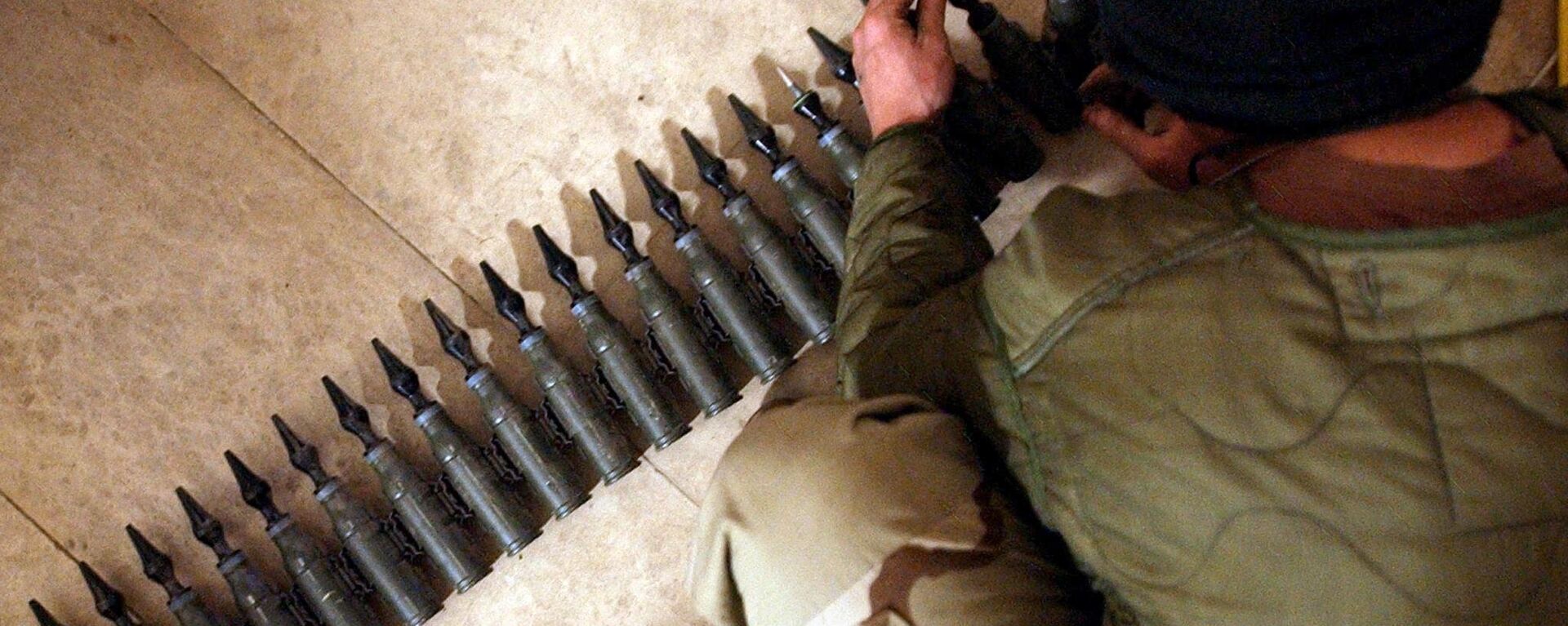
7 September 2023, 15:58 GMT
“Because from what I have read in literature and experiences in other areas of the world, it’s very harmful to humans and lingers in the environment and can be absorbed into the body. I’m not a medical expert, but I know enough from what I’ve read about it and use in Iraq and other places and what we were told even in the sixties that we didn’t want to play with this stuff and be around it even if it was used,” the veteran stressed.
‘We Were Not Told Anything About DU’
US Navy veteran Mike James, a Mass Communication Specialist Petty Officer who fought in Iraq in 2008, says information about the dangers of DU munitions wasn’t made available to him and his comrades by that time.
“We were not told anything about DU. It was never mentioned. It was never talked about,” the vet told Sputnik. “You have a squadron of about 300 guys and the vast majority of them are younger than 30 years old. A lot of young pilots and young maintainers. We were all kind of silly and naïve. I’m sure the same way the military is now. The vast majority of the people are young and naïve and uneducated.”
“We were stationed, at the time we called it ‘Ali Airbase.’ It had several names,” James recalled. “The Army called it Camp Adder, I believe…But it was near the town of Al-Nasiriyah in southern Iraq, which is one of the largest air bases in the country. And Al-Nasiriyah is one of the biggest cities, the biggest city in southern Iraq.”
“It was one of the places where a lot of depleted uranium munitions were fired, beginning in the 90s during the [Iraqi] retreat from Kuwait…A-10 Warthogs fired depleted uranium rounds at retreating Iraqi units from Kuwait…And then again later in the 2000s during Operation Iraqi Freedom,” James, who educated himself on the use of DU in Iraq independently after leaving the military, said.
“From my research, about 300 tons of depleted uranium were fired or are lying around in the desert of Iraq. That’s just from what has been independently verified,” the officer noted, adding that he believes the true figures are much higher.
“Where we were stationed near Al-Nasiriyah is the ancient city of Ur. I think this is an important point: Iraq being the birthplace of the Abrahamic religions and the city of Ur fabled to be the birthplace of Abraham. This is the root of everything that Western society holds sacred. And it’s a land that they absolutely destroyed. It’s one of the most horrific places on earth,” “wantonly destroyed in so many ways” and contaminated by depleted uranium, James emphasized.
“The health consequences are horrendous. They are worse than any American is willing to think about or come to terms with. At least that’s the way it seems. The general public simply cannot come to terms with the horrific effects,” James added, comparing the consequences of DU munitions’ use to Hiroshima.
The former soldier, who now suffers from post-traumatic stress disorder and traumatic brain injuries following deployments in Iraq and Afghanistan, told Sputnik he’s not sure if he got a serious dose of radiation from exposure to DU-contaminated vehicles, land, water and air during his tour in Iraq, but recalled that the rate of pollution was incredible, with a burn pit containing hundreds of Iraqi military vehicles knocked out by DU rounds burning round the clock.
“I was stationed there for six months, and that burn pit never stopped burning. I mean it was 24 hours a day…On certain nights, on a lot of nights…there would just be a constant black smoke that would hang over the ground, maybe 50 feet up or less, 30 feet up, just constant black sky, black smoke, almost every day,” James recalled.
DU Deliveries Prove US Establishment ‘Does not Care About Ukrainian People’
James is convinced that Washington’s decision to send DU to Ukraine constitutes a war crime.
“It’s also a terror weapon because of the effect it has on people. I think it shows fundamentally that the United States does not care at all about the Ukrainian people. I think they know very well that their cancer rates are going to soar with depleted uranium…that the child mortality rate is going to soar. They know that there’s going to be horrific child deformity patients. And they don’t care. And they’re going to do it anyway. It’s not about Ukraine. It’s not about the Ukrainian people. It’s about imperial domination of the planet. And an effort to destroy Russia,” the vet said.
Anderson agrees that there definitely seems to be a hidden “psychological” motivation behind NATO countries' decision to deploy DU to Ukraine.
“They’re trying to prepare the public to accept the use of nuclear weapons in war, which I think is a stepping stone to using tactical nuclear weapons on the battlefield. They keep wanting to present these kinds of weapons, like DU and the B61 bombs, which are tactical, a smaller, dialed down yield of nuclear weapons, as acceptable. And I think it’s a continuing psychological escalation to prepare the American people to accept [that] it’s possible that we could get into a conflict using nuclear weapons, and that ‘it’s survivable’, ‘it’s winnable’.”
Ultimately, such thinking amounts to a “suicidal” “dead end” for humanity, Anderson concluded.




